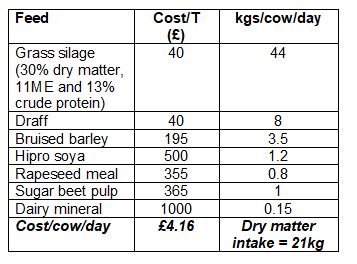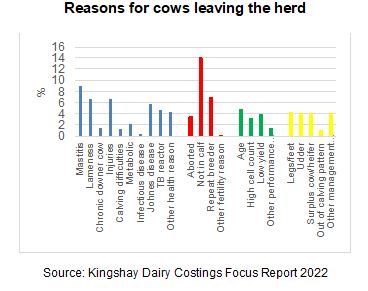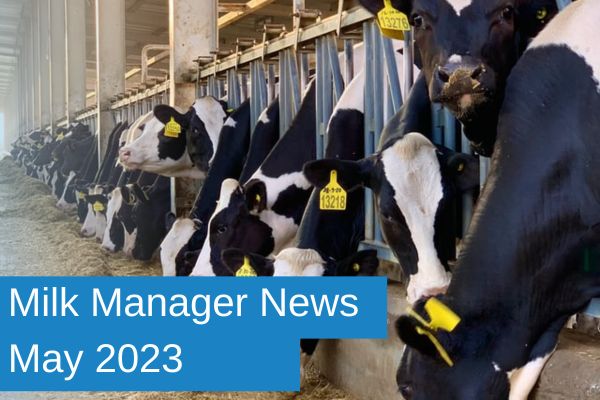Milk Manager News May 2023 – Making Smart Culling Decisions
10 May 2023Given the fall in milk prices since the start of the year and input costs still relatively high, it is really important to ensure that every cow in the herd is paying her way and that any culling decisions are based on sound financial information.
With current high cull cow prices, it may be that culling is more profitable than trying to treat a problem cow. Assuming that the replacement animal is more productive than the one she is replacing, if the cost to rear dairy heifers or to buy in replacement heifers is less than the cull cow price, then it should be more profitable to increase your replacement/culling rate.
Being able to put a financial value on every cow can help with deciding whether a cow should be considered for culling. As a crude measure, a cow’s net value can be calculated from the following:
Cow value = (milk price x milk per lactation) – (cost of feed for the year, including both lactating and dry period feed).
If the value is negative, the cow is costing more in feed than she is earning the business; time to cull her. Alternatively, calculating the amount of milk a cow needs to produce each day to cover her feed costs can also provide a benchmark to assess current performance against feeding/keeping cost.
Daily litres of milk needed to cover feed cost = (current daily cost of feed/milk price)
For example, a M+30 litres TMR ration with the following feeds and prices/T costs £4.16/cow/day.

Therefore, at a milk price of 38ppl, the break-even daily litres needed to cover the feed cost is £4.16/0.38 = 10.9 litres, excluding the cost of putting her through the parlour. If a cow’s production is below this benchmark of 10.9 litres, she is not covering her feed costs and a decision can be made whether to cull her or dry her off early.
Obviously, reproductive status will influence culling decisions. While feed costs can make up nearly 70% of variable costs, additional costs of keeping a cow, including health and fixed costs, should also be taken into account and equated to the extra milk required to cover those additional costs.
Aside from health issues, poor fertility is one of the biggest reasons for culling according to Kingshay (see following graph). Therefore, identifying cows not to breed from should be done in early lactation so as not to incur the costs associated with breeding animals that are not likely to get in calf. This includes cows with any abnormalities of the reproductive tract, those that are still empty after multiple services (or had multiple services in the previous lactation) or are chronic high cell count cows. These cows should be milked until the value of their milk yield drops below the feeding/keeping cost of that animal, at which point they should be culled.

Other factors to take into account include:
· Availability of replacements. This will depend on whether they are home-bred or purchased and use of sexed semen. If there are insufficient heifers available, culling may not be the best strategy. In theory, heifers should be of higher genetic merit than your cows so it is worth remembering a cull cow will be replaced with a genetically superior animal.
· Where does she rank in the herd? Some software packages allow you to rank your cows, taking into account many factors, not just milk yield. When the opportunity for voluntary culling arises, this helps identify the least profitable cows to cull and treatment decisions i.e., you are more likely to treat a cow with mastitis if she is ranked 5th in the herd as opposed to a cow ranked in the bottom 10% of the herd.
· Health records. Good health records are valuable for basing culling decisions on.
· Time management. Is she adding to hidden costs e.g., additional time spent administering health treatments or extending milking times for relatively small amounts of milk?
· Work to your target herd size. Herd size is controlled by culling and your target should take into consideration limiting factors such as labour, feed space, housing space and land availability/forage production potential.
lorna.macpherson@sac.co.uk; 07760 990901
Sign up to the FAS newsletter
Receive updates on news, events and publications from Scotland’s Farm Advisory Service

